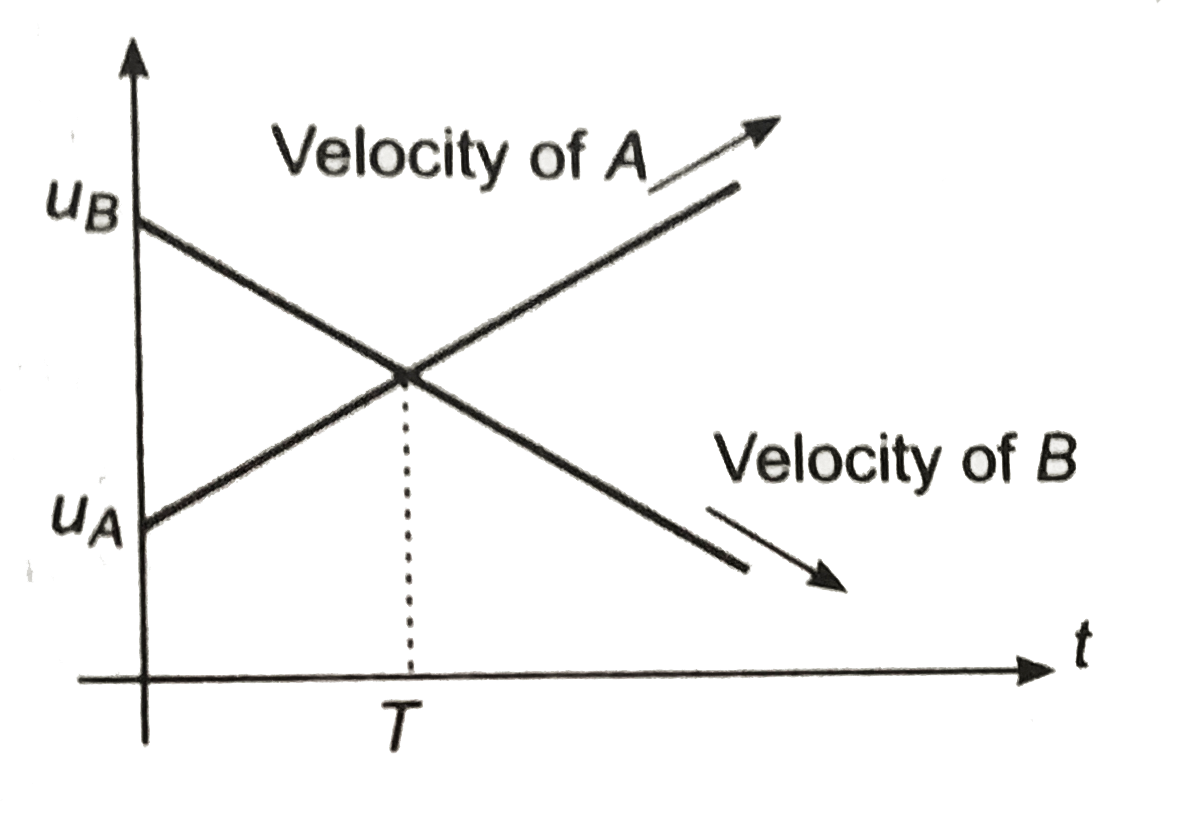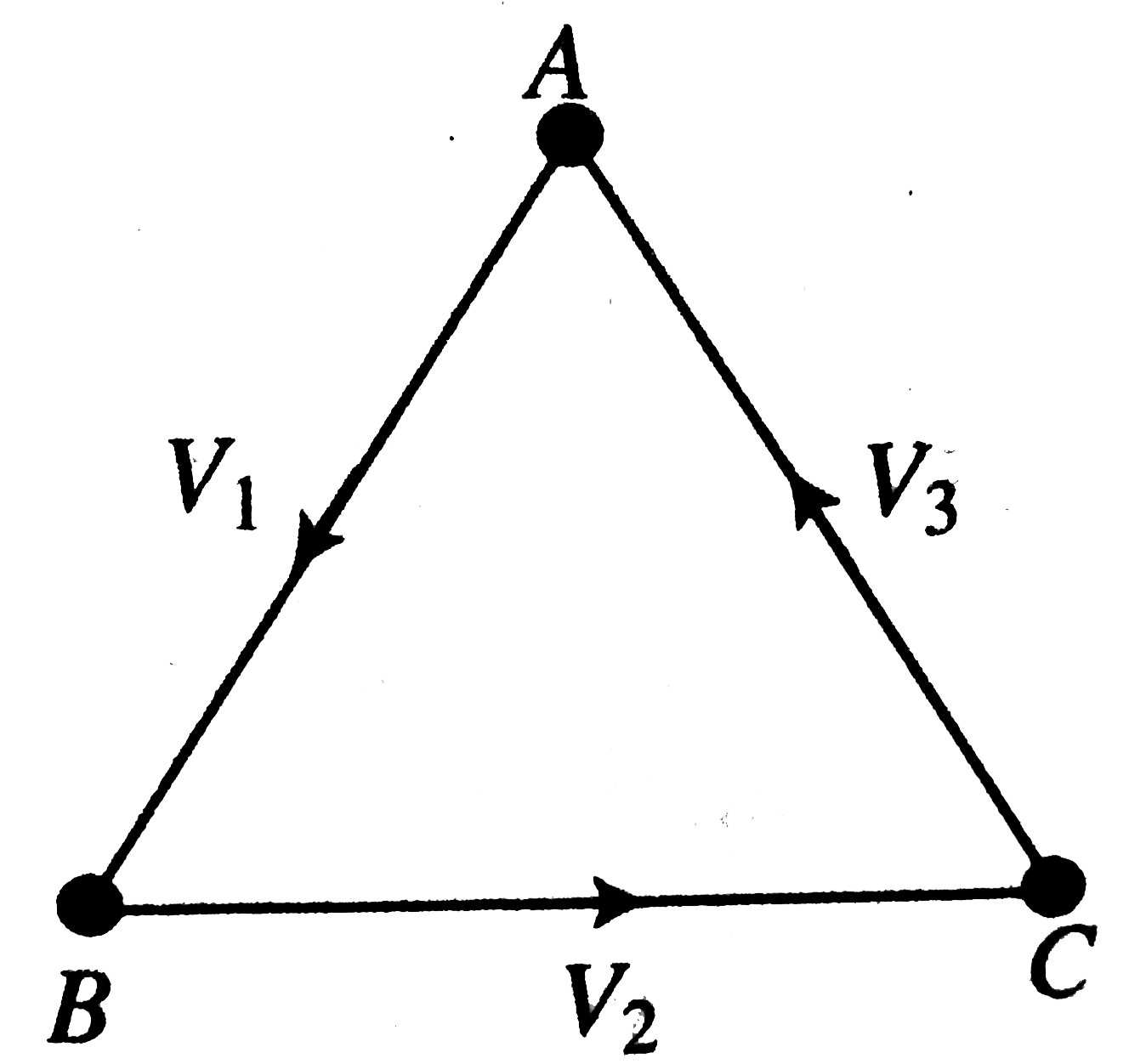Two boys are standing at the ends A and B of a ground where AB=a. The boy at B starts runing in a direction pependicular to AB with velocity v1. The boy at A starts runing simultaneously with velocity is v and catches the other boy is time t, where t is
a/√v2+v21
a√v2−v21
a/(v−v1)
a(v+v1)
The correct Answer is:B
Topper's Solved these Questions
- KINEMATICSBOOK - AAKASH SERIESCHAPTER - KINEMATICSEXERCISE - LECTURE SHEET (EXERCISE-IV) (2D other than Projectile) (Integer Type Questions)
2 Videos
- KINEMATICSBOOK - AAKASH SERIESCHAPTER - KINEMATICSEXERCISE - LECTURE SHEET (EXERCISE-V) (Oblique Projectile & Projecting on incline plane ) (Straight Objective Type Questions)
18 Videos
- KINEMATICSBOOK - AAKASH SERIESCHAPTER - KINEMATICSEXERCISE - LECTURE SHEET (EXERCISE-III) ( Graphs) (Matrix Matching Type Questions)
1 Videos
- HORIZONTAL CIRCULAR MOTIONBOOK - AAKASH SERIESCHAPTER - HORIZONTAL CIRCULAR MOTIONEXERCISE - ADDITIONAL PRACTICE EXERCISE (PRACTICE SHEET (ADVANCED) Integer Type Questions)
3 Videos
- KINETIC THEORY OF GASESBOOK - AAKASH SERIESCHAPTER - KINETIC THEORY OF GASESEXERCISE - Practice Exercise
15 Videos
Similar Questions
Two boys are standing at the ends A and B of a ground where AB = a. The boy at B starts running in a direction perpendicular to AB with velocity v1 . The boy at A starts running simultaneously with velocity v and catches the other in a time t, where t is
View SolutionA body A moves with a uniform acceleration a and zero initial velocity. Another body B, starts from the same point moves in the same direction with a constant velocity v. The two bodies meet after a time t. The value of t is
View Solution
Knowledge Check
Two boys are standing at the ends A and B of a ground, where AB=a. The boy at B starts running in a direction perpendicular to AB with velocity v1. The boy at A starts running simultaneously with velocity v and catches the other boy in a time t, where t is :
Aa√v+v21B√av2+v21Ca(v−v1)Da(v+v1)Two boys are standing at the ends A and B of a ground where AB= a. The boy at B starts running in a direction perpendicular to AB with velocity v. The boy at A starts running simultaneously with velocity v and catches the other in a time t, where t is
Aa√ν2+ν21Baν+ν1Caν−ν1D√a2ν2−ν21A particle moves with an initial velocity v0 and retardation αv, where v is the velocity at any time t.
AThe particle will cover a total distance v0αBthe particle will come to rest after time 1αCthe particle will continue to move for a along timeDThe velocity of particle will become v0e after time 1α
A situation is shown in which two objects A and B start their motion from same point in same direction. The graph of their velocities against time is drawn. uAanduB are the initial velocities of A and B respectively. T is the time at which their velocities become equal after start of motion. You cannot use the data of one question while solving another question of the same set. So all the questions are independent of each other.
6. Let vAandvB be the velocities of the particles A and B respectively at the moment A and B meet after start of the motion. If uA=5ms−1anduB=15ms−1, then the magnitude of the difference of velocities vAandvB is

View SolutionA boy is runing on the plane road with velocity v with a long hollow tube in his hand. The water is falling vertically downwards with velocity u. At what angle to the verticaly, he must inclined the tube the water drops enter it without touching its sides ?
View SolutionThree particles of equal masses are placed at the corners of an equilateral triangle as shown in the figure. Now particle A starts with a velocity v1 towards line AB, particle B starts with a velocity v2 towards line BC and particle C starts with velocity v3 towards line CA. The displacement of CM of three particle A,B and C after time t will be (given if v1=v2=v3)

View SolutionA situation is shown in which two objects A and B start their motion from same point in same direction. The graph of their velocities against time is drawn. uAanduB are the initial velocities of A and B respectively. T is the time at which their velocities become equal after start of motion. You cannot use the data of one question while solving another question of the same set. So all the questions are independent of each other.
6. Let vAandvB be the velocities of the particles A and B respectively at the moment A and B meet after start of the motion. If uA=5ms−1anduB=15ms−1, then the magnitude of the difference of velocities vAandvB is

View SolutionA person travels along a straight road for the first half length with a velocity v1 and the second half length with velocity v2. What is the mean velocity of the person ?
View Solution
